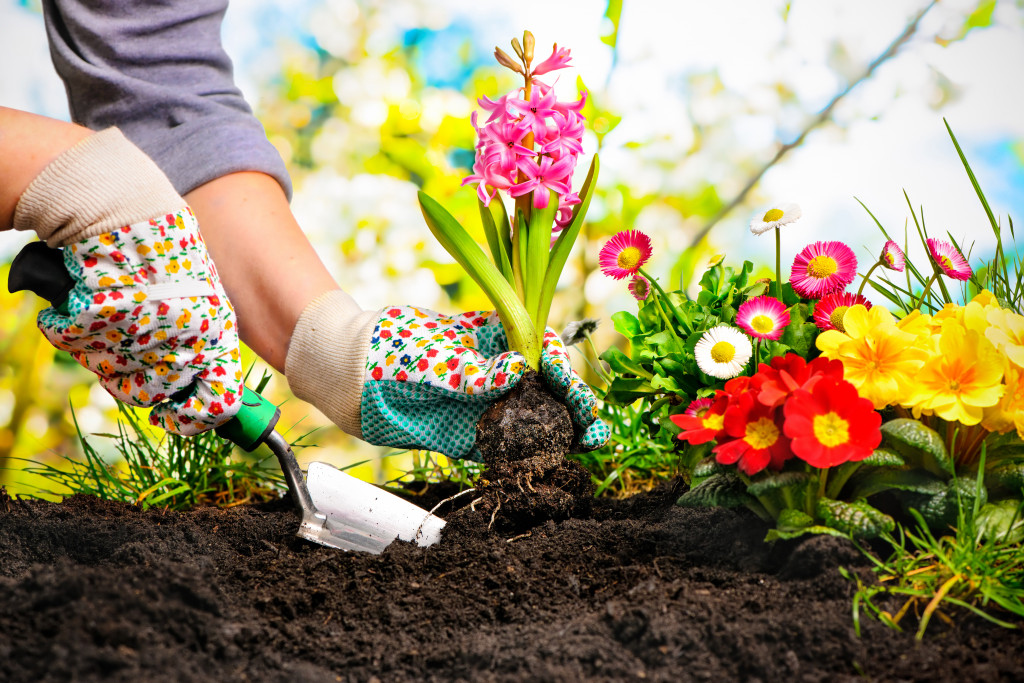Gardening takes a lot of time and energy, not to mention love and dedication, to make a piece of land into something green and beautiful. Unfortunately, no matter how good we take care of our prized lawns and gardens, they will still take damage from natural forces such as the storm that hit Northern Utah, accompanied by winds and heavy rain, a few days ago. Nevertheless, we should take some action to prepare our yard and ourselves the moment we hear news of an impending storm.
The Immediate Area
Start by cleaning clutter and possible debris from your surroundings. These materials can be a hazard to your home and your safety when they get picked up by strong winds. Dispose of them right away. Make sure that they are secure and cannot be scattered easily. Don’t forget to clear up gutters, waterways, and storm drains of things that can clog them to prevent overflow and flooding.
Materials from your yard like umbrellas, gardening tools, potted plants, hanging baskets, grills, and furniture should be brought inside a shed or someplace where you can secure them from the wind. Heavier objects that you cannot move easily may still be knocked down. Try getting them closer to sturdy structures.
During the storm, make sure that your irrigation system is turned off because damage to running pipes may cause or add to the flooding in your area.
Plants
Delicate and tall, slender plants will most likely sustain great damage. Examine your garden and find those that you can take with you inside the house. Consider re-potting plants that are rooted in the ground so you can bring them in. See if you can also stake the taller and more resilient plants left outside to prevent them from breaking.
Other portable potted plants that cannot be brought inside can be moved to more secure places like inside your garage or to the outside corners of your house, where they can be anchored down using a strong rope.
Before the storm, avoid adding mulch and fertilizers to plants that will be left out in the open. The Environmental Protection Agency (EPA) warns that the rain will only wash them away through the waterways and storm drains, dumping the nutrient-rich water into lakes and other natural bodies and ultimately contributing to major environmental problems such as algal blooms.
Trees
Examine trees around your property as well. If a tree is standing too close to your house, leaning toward a power line or is in poor condition where it might break in weak or diseased parts and cause big damage, consider trimming the tree. Note that this should be done weeks before a storm because the debris may be stuck in your yard, leaving more material for the wind to flail around. Never try to prune your trees during a storm. Otherwise, try anchoring the tree down or just leave it as it is. An intact tree is better than flying branches around your property.
After the Storm

Inspect your yard only after making sure that the storm has already passed. By then, you can check the damage in your garden and decide whether to start rebuilding by yourself or consulting with a landscape expert. If almost everything is destroyed, salvage whatever you can and dispose of the damaged remains. If little damage was sustained, move on to examining every plant to see what you need to do for every one of them.
Small plants with muddied leaves must be rinsed off so that they may resume photosynthesis. Excess water and thick mud should also be removed from the tops of plant beds to prevent your plants from drowning and dying from the root up. This also prevents insects from propagating in murky and stagnant water. After leaving them to dry a little, replace the mulch washed away by the rain.
Find the right time to turn on your watering system when the plants are ready to recuperate. Until then, water them by hand so that you can check their status more closely and give them the right treatment that they need.
A Good Plan to Prepare for Everything
Planning early for the future of your garden will help you prevent damage from the following storms. Plan how you can rearrange or replace the plants in your yard. Planting trees or woody types of hedges around the sides will help break the winds entering your property. Instead of planting delicate flowers, consider propagating sturdier ones as they might stand a better chance against bad weather.

